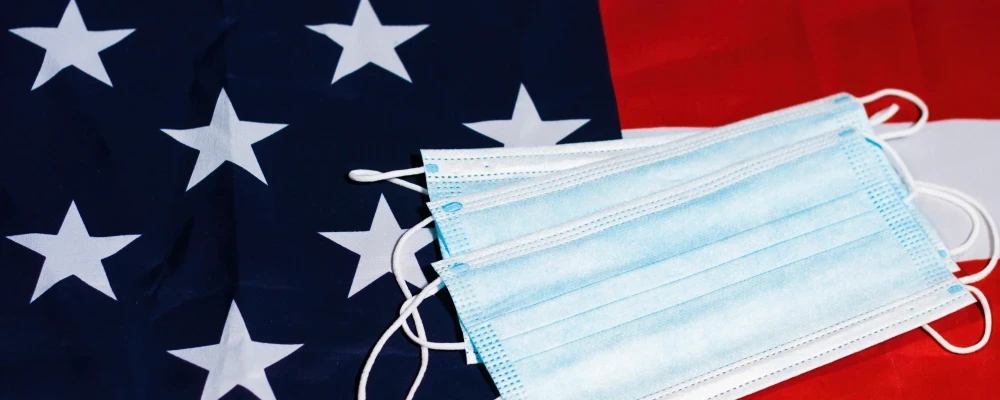About The American Rescue Plan
The American Rescue Plan aims to reduce health care costs, expand access to insurance coverage, and address health care disparities.
Our content follows strict guidelines for editorial accuracy and integrity. Learn about our and how we make money.
In March, President Joe Biden signed the $1.9 trillion American Rescue Plan, or ARP, into law. ARP is Biden’s attempt to address some of the biggest issues impacting Americans in the wake of the COVID-19 global pandemic.
One of the most pressing issues that COVID-19 has put a spotlight on is the fact that millions of Americans remain uninsured. The American Rescue Plan aims to address that by increasing and expanding eligibility for Affordable Care Act (ACA) premium subsidies for Americans who are enrolled in marketplace health plans, among other items. Let’s take a closer look.
COBRA Coverage Subsidies
COBRA continuation coverage lets Americans who lose healthcare coverage under an employer health plan purchase it through their employer-sponsored plans. Typically, this lasts up to 18 months. COBRA coverage is generally very expensive, and the employee is responsible for a premium of up to 102 percent of the total cost, including the share that was formerly paid for by their employer. But, it allows the person who lost employer coverage to be able to keep seeing their doctors and frees them from having to satisfy a deductible under a new plan.
The American Rescue Plan provides a federal subsidy of 100 percent of COBRA premiums for those who lose coverage because they are laid off or have experienced a reduction in hours. People who quit voluntarily are not eligible for the COBRA subsidy. You are also ineligible for subsidies if COBRA resulted from other qualifying events, like death or divorce from the covered employee, the covered employee became eligible for Medicare or lost dependent child status.
The subsidies are paid through tax credits that go to employers with self-insured plans and are sent to insurers for insured plans. They will be available starting in April and lasting through September.
Enrollment
If people did not enroll in COBRA coverage when they lost their jobs during the early days of COVID-19 or who enrolled but ended up dropping coverage are now eligible to sign up for subsidized coverage. They must enroll within 60 days of coverage becoming available or as soon as they receive notice from their employer.
Separate guidance from the Department of Labor permits people to register for coverage up to 60 days from the end of the year after their initial eligibility or the end of the ongoing public health emergency—whichever comes first. This means that people who didn’t enroll in COBRA late last year or this year are now eligible to enroll in the heavily subsidized COBRA benefits.
Federal estimates show that 2.2 million people are expected to enroll in this coverage under the House bill, which only offers 85 percent premium support. Without this, 600,000 people would have remained uninsured.
Expanded Marketplace Subsidies
The American Rescue Plan will also enhance marketplace subsidies by reducing the percentage of income that people are required to pay for health insurance in order to become eligible for subsidies, thus increasing both the number of subsidies as well as the number of people who would likely be covered. People who are enrolled who have incomes between 100 and 150 percent of the federal poverty level are eligible to obtain benchmark silver-plan coverage at no cost.
For the first time in history, people with incomes that are above 400 percent of the poverty level are also eligible for subsidies.
Bronze plans are free as well, and gold plans will be affordable for enrollees in many states. During the current ACA special-enrollment period, enrollees in HealthCare.gov marketplace states (and many other states) can change plans, which many people will probably do as healthcare coverage starts to become more affordable.
The American Rescue Plan's changes will be especially helpful for older Americans and those who live in areas with high health insurance premiums. Unfortunately, the increased premium support benefits are only expected to go on for the next two years. The Congressional Budget Office estimates these premium reductions will boost marketplace coverage by 1.7 million people—1.3 million of those would have otherwise gone uninsured.
Further Premium Tax Credit Provisions
There are two more American Rescue Plan provisions dealing with premium tax credits. People who experienced income loss and fluctuations amid the global pandemic in 2020 or who received unemployment benefits that they didn’t realize would be taxable may have tax credit overpayments. The American Rescue Plan does not require them to pay these back. If you have already paid these taxes, contact the IRS so that you can get your money back.
The American Rescue Plan also ensures that Americans who received unemployment benefits during 2021 and who aren’t otherwise eligible for health coverage will be able to receive the maximum subsidies for marketplace coverage as well as cost-sharing reductions.
Unlike the Affordable Care Act’s general premium tax credits, the American Rescue Plan's benefits are not just limited to people earning over 100 percent of the poverty level. This is key to being able to help people in states that haven’t expanded Medicaid. Figures from the Congressional Budget Office estimate that this provision will help 1.4 million people. Among those 1.4 million people, 900,000 of them would otherwise be entitled to marketplace coverage with much higher premiums.
Of course, it will take time and work to roll out these provisions. The Department of Health and Human Services has announced the enhanced ACA premium subsidies will be available via HealthCare.gov starting April 1.
However, other American Rescue Plan changes may take more time. Ultimately, the changes will significantly expand access to healthcare for a majority of Americans. Don’t forget that under the current special COVID enrollment period, you have until May 15 to enroll for the first time in ACA coverage or change plans so that you can take advantage of the extra help.